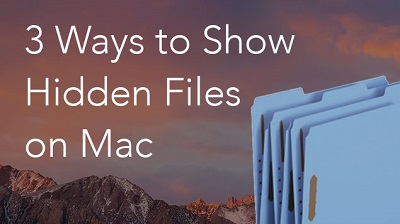How to Show Hidden Files Mac
Show hidden files Mac: As one of the Mac computer users, you know that this Operating System keeps some folders and files hidden from your view. Admittedly, this feature is useful to the users, as it prevents the accidental removal of the crucial documents. The improper and inaccurate operations damage the files in your mac OS. That is why Apple has integrated this feature into its OS. However, those invisible files would consume your disk space as any other files. Logs, caches, and preferences are some of the commonly hidden files by default. You may also use special apps for hiding the regular files for the ultimate protection. Although this feature is valuable for you, there are some cases when you may need to show hidden files on Mac.
Table of Contents
Reason to Show Hidden Files on Mac
- To delete the leftovers of apps, already removed from your system
- To identify files, hidden for protection purpose
- To have a backup of some relevant data, like browser’s bookmarks
- To troubleshoot the issues of some of your apps
- To remove cache
Not every hidden folder is essential to you. However, as they are consuming space, it is better to locate them. Now, we have found ways to show hidden files in Mac OS.
3 Ways to Show Hidden Files on Mac
1. Using Terminal Application
Most of the Apple users know about the default application, Terminal, present in the Launchpad. This default application enables you to deal with different types of operations with the use of special commands. You need to use the right command line for showing hidden Mac files.
Use your Launchpad for opening Terminal applications.
defaults write com.apple.finder AppleShowAllFiles –bool true killall Finder
You have to copy the above command and paste it on Terminal window
It is a special command for restarting Finder. Then, you can find the hidden folders and files on the Mac computer. While you think of hiding the files once again, you may repeat this process. You have to replace the last term of the command line with –false.
- First step- Click on Finder and then go to Applications and Utilities. This will open your Terminal
- Second step- In the app, Terminal, you have to enter the command defaults write com.apple.finder AppleShowAllFiles YES
- Third- Hit the option- Return
- Fourth step- Press Option Key and go to the Finder icon for right-clicking on it.
Then, click on the app, Relaunch. This will help you to show hidden Mac files instantly. Now, for hiding back the file, there is another command-
defaults write com.apple.finder AppleShowAllFiles NO
2. Shortcut to Show Hidden Files in Mac
The present Mac Operating System version of your Apple device may be Mojave or High Sierra. It helps you to show hidden files Mac by using the Shortcut of Finder. The shortcut to do it is CMD + Shift +. You may also use this shortcut to hide the files.
You might also like: How to clear DNS cache in Mac
3. Using Finder
It is one of the easiest methods, and you need only one or two minutes to find out the hidden files.
- At the bottom of the toolbar, you may click on the app, Finder.
- Under the menu- Location of a side toolbar, you can choose Mac name.
- Find the option- Macintosh HD. You have to double click on it
- Then, hit the Period keys, Command and Shift keys for displaying hidden folders. This step will make the files appear on the screen.
For hiding the files once more, you have to go through the shortcut process. These steps are applicable for finding the application files, documents, and different other files. While the method does not work for your Mac PC, you may try out other processes.
Conclusion
We have made a list of the most common ways to show hidden files Mac. You may need to find those files to remove the junk ones. Some users think of doing it to troubleshoot a software application. When the files become visible, you have to be careful in removing them. There are also different third-party apps for identifying the hidden documents. You may use them to accomplish your task. Not all methods would work for every Mac user. Thus, you have to choose the alternatives for detecting the hidden files successfully.
Follow Us On:
